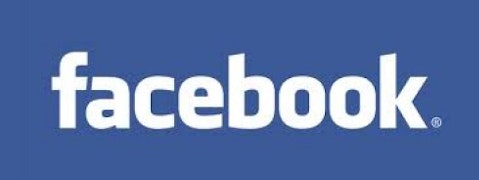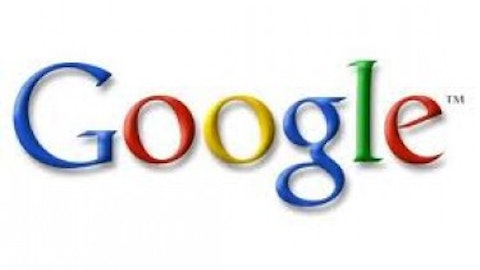Hashtags are permeating our conversations, even when they have almost no use. The other day a younger friend sent me a text message with a hashtag in it. It was weird.
On social sharing sites like Twitter and Pinterest, hashtags are useful for group conversations so that others can easily join in. That’s why it’s no surprise the social network, Facebook Inc (NASDAQ:FB), is adding hashtags to its website. This is just one of several moves the company is making to become more like Twitter.
#Hashtags
Twitter is arguably Facebook Inc (NASDAQ:FB)’s biggest competition in the social network space. Copying its pound symbol language validates the platform and admits some form of defeat.
But Facebook’s audience is five times bigger than Twitter’s, and a bigger audience means more advertising opportunity. Facebook product manager Greg Lindley said in a blog post last week that Facebook has between 88 million and 100 million Americans actively using Facebook Inc (NASDAQ:FB) during prime-time television hours. Advertisers are willing to pay big bucks to get their messages in front of that many eyeballs.
Twitter has had great success connecting to the second screen audience. It’s the place to go for real-time conversation. Advertisers and television marketers have added hashtags to the ends of commercials and the corners of television shows, so people know where to find the conversation. As a result, Twitter is able to bring in a wealth of targeted advertisements based around hashtags.
Facebook wants to do the same, or at least grab a piece of the hashtag ad action. Last year, Twitter generated an estimated $288 million in advertising revenue. Analysts expect that number to more than double this year to $583 million. Those numbers are comparable to where Facebook was at that stage in its monetization efforts (about 3 years in).
Today, Facebook Inc (NASDAQ:FB) generates over $1 billion in advertising revenue every quarter. Most of its growth has come from user growth – more people are looking at ads. Hashtags provide Facebook with an opportunity to serve more ads to the same number of people, so as its user growth slows, ad revenue can continue at its historical pace.
#MeToo
Facebook Inc (NASDAQ:FB) isn’t the only one that wants in on hashtags: Google Inc (NASDAQ:GOOG) rolled out the feature on its Google+ social network last year. Last month, at its Google I/O conference, the company unveiled a feature called “related hashtags.” The software will analyze the content of a new post and automatically apply appropriate hashtags. Google Inc (NASDAQ:GOOG) hopes that this will speed up the adoption of hashtags on Google+, and create more user engagement.
Currently Google+ sports more than 500 million accounts, but only 135 million active monthly users. Moreover, the average users spends less than 7 minutes per month on the site, compared to more than 6 hours on Facebook. As a result, brands are not very active on the platform, making monetizing the site an impractical idea at this moment.
Of course, Google Inc (NASDAQ:GOOG) can afford to run the site, mine the data, and funnel it back into its highly profitable search and display ad businesses. Overall, Google is projected to generate 33% of total online ad revenue in 2013. Google+ is a valuable property for Google, even without generating any revenue itself. That said, the more engaged its users, the more valuable it becomes. Wide adoption of hashtags on the site could help.
Both Google and Facebook Inc (NASDAQ:FB), however, face an uphill battle in associating the ubiquitous Twitter-speak with their products. Facebook’s Instagram has done well, but is hardly used for real-time events. Currently, it’s hard to see the pound symbol and not think of Twitter.
Additionally, both companies need to generate a wide adoption rate, a problem Google is trying to solve with “related hashtags.” The feature is rendered worthless if less than a critical mass use it. The more people searching for tags, the more advertising dollars Facebook or Google can generate from promoted posts.
#Video
Vine, Twitter’s short-form video app, has accumulated more than 13 million users since its release in January. The app is quite simply on fire, with its engagement growth in May outpacing popular apps like WhatsApp, SnapChat, LinkedIn Corp (NYSE:LNKD), and Chrome.
Earlier this month, Vine surpassed Instagram in Twitter shares. More people are opting for the more versatile format Vine offers over the still photos you can share through Instagram.
Perhaps that’s why Facebook Inc (NASDAQ:FB) is rumored to be adding Vine-like video support to Instagram later this month. With 35.5% of iPhone users on Instagram every month, compared to just 10.7% for Vine, Facebook has an opportunity to leapfrog Twitter in the growing short-form video market.
Interestingly, Vine’s growth has been mostly in the United States. It also has a wide reach in Norway and New Zealand, but its global presence remains very small compared to Instagram’s. There’s opportunity for Facebook to tackle major European and Asian markets before Vine becomes popular by leveraging its Instagram user base.
If Facebook can beat Vine to those markets and engage a large portion of its 100 million active users, it may be the final push Facebook needs before reaching critical mass and monetizing Instagram. Popular brands are already on Instagram posting pictures. Give them a video platform as well, and they’ll be clamoring for a way to reach a wider audience. Instagram already has a wide adoption of hashtags, so the path to monetization seems pretty clear.
Video advertising is one of the fastest growing segments of online advertising. What was once a miniscule $347 million back in 2004 in the early days of video streaming has ballooned into a $12.5 billion industry in 2012.
Google’s YouTube is at the forefront of the trend, generating an estimated $1.4 billion last quarter alone – 10% of Google’s total revenue. 25% of that was through mobile, the platform for which Vine and Instagram are made. In fact, YouTube has seen its biggest growth on the mobile platform as mobile users account for 40% of total views.
Facebook Inc (NASDAQ:FB) and Twitter may be sitting on the next part of the mobile video advertising story. But with just 10% the number of users on Instagram, 1.3% on Vine, compared to YouTube’s 1 billion users, neither company could expect to see revenues on the same level of YouTube for awhile. As the short-form video rapidly gains popularity, however, it presents a big revenue growth opportunity once effectively monetized.
#Money
If imitation is the sincerest form of flattery, Twitter must feel pretty flattered right now. But it should also feel threatened. Facebook is coming after its biggest source of revenue and taking on its fastest growing segment. I won’t be surprised if Twitter takes steps to further distance itself from Facebook and Instagram.
For Facebook, both these steps signify the opportunity it has to continue growing revenue. A “Super Bowl-sized audience every single night” and another 100 million-plus monthly users through Instagram should get advertisers salivating. Facebook is definitely positioning itself as the place for advertisers to reach a highly targeted audience.
The article @Facebook Wants to be Like #Twitter originally appeared on Fool.com and is written by Adam Levy.
Adam Levy has no position in any stocks mentioned. The Motley Fool recommends Facebook and Google. The Motley Fool owns shares of Facebook and Google. Adam is a member of The Motley Fool Blog Network — entries represent the personal opinion of the blogger and are not formally edited.
Copyright © 1995 – 2013 The Motley Fool, LLC. All rights reserved. The Motley Fool has a disclosure policy.





